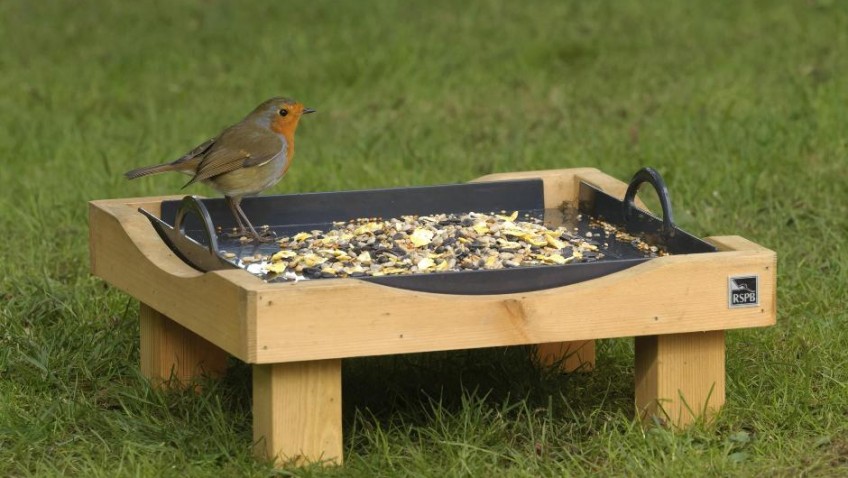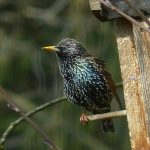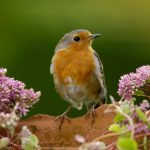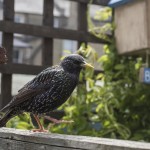But visits to gardens made by wrens, robins and blackbirds up from last year
More than a million eyes took up the RSPB’s Big Garden Birdwatch challenge of ‘seeing things through the eyes of a bird’ this year, witnessing some exciting and interesting changes among our most popular garden birds.
In excess of 585,000 people across the country spent an hour during the weekend of 24 and 25 January watching their garden and recording any feathered friends that made a flying visit – close to a 100,000 increase on 2014.
Overall more than eight-and-a-half million birds were spotted, making it another bumper year. Refreshingly, sightings of every bird that featured in this year’s top 20 increased on the numbers recorded in 2014, apart from the three finches; chaffinch, goldfinch and greenfinch.
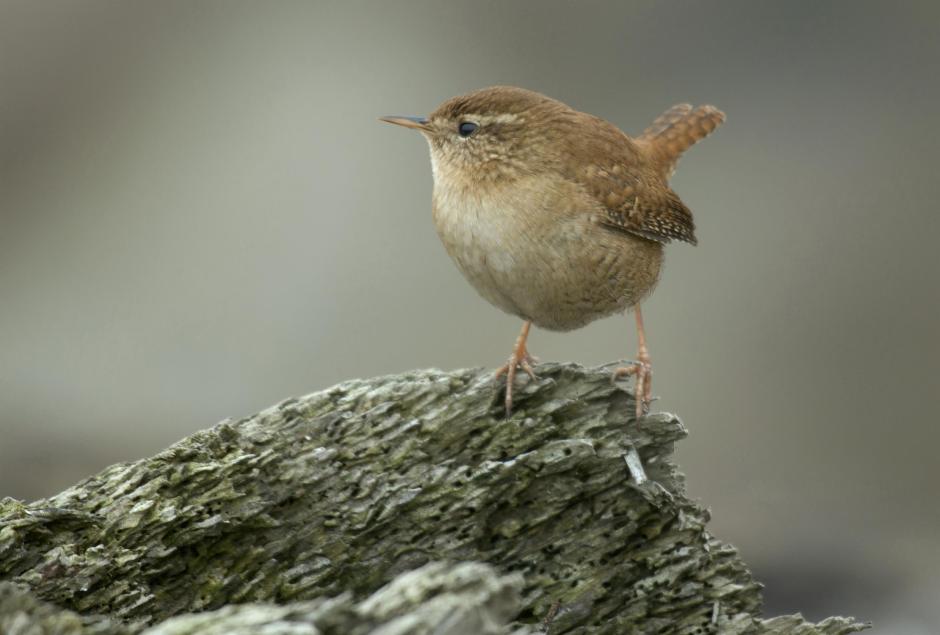 The average number of robins seen visiting gardens was at its highest since 2011, helping it climb three places to number seven, its joint highest-ever position in the Big Garden Birdwatch rankings. Blackbird was another climber, moving to number three and becoming the UK’s most widespread garden bird after being spotted in more than 90% of UK gardens.
The average number of robins seen visiting gardens was at its highest since 2011, helping it climb three places to number seven, its joint highest-ever position in the Big Garden Birdwatch rankings. Blackbird was another climber, moving to number three and becoming the UK’s most widespread garden bird after being spotted in more than 90% of UK gardens.
Despite being the UK’s smallest garden bird, twice as many people picked out a wren calling by their garden this year than in 2014, consolidating its place in the top 20 most popular garden birds.
However, two species found in this year’s Big Garden Birdwatch’s top 20 most popular birds remain on either the red of Birds of Conservation Concern [note 4], highlighting just how valuable our gardens can be. House sparrow and starling are on the red list meaning that they are of ‘highest conservation priority – species needing urgent action’.
RSPB Conservation Scientist, Dr Daniel Hayhow, said: “Many garden birds are in desperate need of our help. During winter, birds need extra food and water, a safe place to shelter and make their home. Gardens providing these things are an invaluable resource for birds and are likely to have a significant effect on their numbers, perhaps even playing a pivotal role in reversing some declines.
“We hope through this year’s Big Garden Birdwatch challenge of seeing things through the eyes of birds really helped people to understand exactly how they use your garden, and will allow them to improve the ways to give nature a home all year round.”
Big Garden Birdwatch results also showed a drop in finch numbers this year, but scientists aren’t panicking yet.
Daniel added: “Despite the cold weather birds such as; goldfinch, greenfinch and chaffinch may not have been as reliant on food found in our gardens during the cold snap because of a decent natural seed supply found in the wider countryside this winter following a good summer.
“The weather can ha ve varied effects on different groups of birds in terms of behaviour and habitats used. This year, a better seed supply in the countryside for finches means that we saw fewer visiting our gardens, On the other hand during the cold spell, birds like blue tit and robin would still be more reliant on food found in our gardens.”
ve varied effects on different groups of birds in terms of behaviour and habitats used. This year, a better seed supply in the countryside for finches means that we saw fewer visiting our gardens, On the other hand during the cold spell, birds like blue tit and robin would still be more reliant on food found in our gardens.”
While alarms bells aren’t ringing about this annual variation in finch numbers, for greenfinches this drop does continue a long term decline of 53% since 1979, which is likely due to Trichomonosis disease. Intriguingly, the top four locations for greenfinch in this year’s Big Garden Birdwatch are islands; Orkney Islands, Isle of Scilly, Eilean Siar and Isle of Anglesey, possibly suggesting the disease hasn’t spread to these areas yet. This further highlights the need to maintain a high level of hygiene at garden feeding stations to halt the spread of Trichomonosis.
“Trichomonosis disease has reduced the greenfinch population severely in recent years, and has been documented in other garden birds, including chaffinch. Following simple sensible hygiene procedures when feeding garden, such as regularly cleaning feeders and tables, is a step in the right direction in stopping the spread of this deadly disease,” added Daniel.
Other continuing declines include starlings and song thrushes, which have dropped by an alarming 80 and 79 per cent respectively since the Birdwatch began in 1979. Both species are on the UK ‘red list’ meaning they are of the highest conservation concern.
There was also a notable decline in the number of winter migrants that were spotted over the Birdwatch weekend. Redwing, brambling and waxwing all dived down the rankings although RSPB scientists believe this may have more to do with the good conditions on the continent over the winter, reducing the need for these birds to migrate to the UK.
There is slightly better news for the house sparrow, as its long term decline appears to have continued to slow, and it remains the most commonly spotted bird in our gardens. However, it remains a conservation concern as numbers have dropped by 57% since 1979.
For the second year running, participants were also asked to log some of the other wildlife they see in their gardens. The RSPB asked whether people ever see slow worms and grass snakes as well as deer, squirrels, badgers, hedgehogs frogs and toads in their gardens, which were all added last year.
 This will help build an overall picture of how important our gardens are for giving all types of wildlife a home.
This will help build an overall picture of how important our gardens are for giving all types of wildlife a home.
This information will be analysed and results will be revealed next month.
The parallel event, Big Schools’ Birdwatch, continued the record breaking theme with more schools and children taking part than ever before. The UK-wide survey of birds in schools had almost 90,000 participants and revealed that blackbird is the most common playground visitor for the seventh year in a row. The top three was rounded off by starling and house sparrow, which is now at its highest-ever position in the Big Schools’ Birdwatch rankings.
Big Garden Birdwatch and Big Schools’ Birdwatch are a part of the RSPB’s Giving Nature a Home campaign, aimed at tackling the housing crisis facing the UK’s threatened wildlife. The charity is asking people to provide a place for wildlife in their own gardens and outside spaces – whether it’s putting up a nest box for birds, creating a pond to support a number of different species or building a home for a hedgehog.
To find out how you can give nature a home where you live visit: rspb.org.uk/homes

